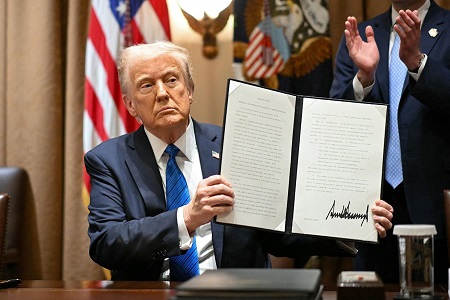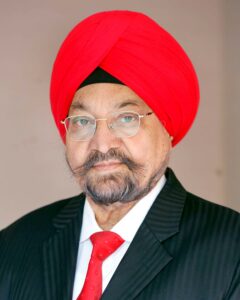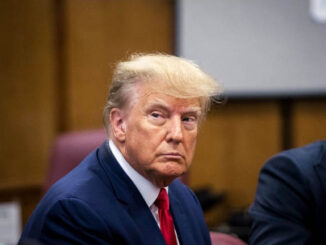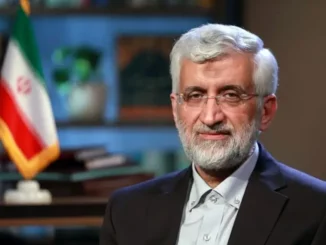
These reforms are not Republican or Democrat in nature—they are commonsense protections that uphold the integrity of our republic. In fact, polls show that a majority of Americans across the political spectrum support voter ID laws and stronger election oversight.

I am no admirer of President Donald Trump. I may find a hundred and one faults with the man. But for once, I have all the praise for him for his bold move aimed at restoring public trust and ensuring the sanctity of America’s electoral process.
President Donald J. Trump has issued a sweeping Executive Order focused on election integrity. This decisive action, long awaited by millions of Americans, seeks to address a growing crisis of confidence in the U.S. voting system—one that has lingered for years across party lines.
The Executive Order is not just a document of reform—it is a blueprint for securing the future of American democracy. In a world where faith in institutions is rapidly declining, the importance of credible, secure, and transparent elections cannot be overstated. President Trump’s initiative represents a clear acknowledgment that the foundation of any republic lies in the trust its citizens place in the ballot box.
A System in Need of Reform
Despite being the world’s oldest constitutional democracy, the United States has frequently found itself under fire for electoral inconsistencies. The 21st-century American election landscape has grown increasingly chaotic, marred by confusing rules, patchwork regulations, and prolonged tabulation timelines. Each election cycle brings with it a new wave of public skepticism, court challenges, and media-fueled drama. This is not a sign of a healthy democracy.
President Trump’s order directly responds to these issues by laying out a comprehensive plan to modernize, standardize, and safeguard the voting process. From voter ID mandates to transparent tabulation protocols, this Executive Order seeks to end the cycle of confusion and restore faith in our most sacred civic exercise.
Learning from Global Best Practices
Perhaps one of the most striking and commendable elements of the Executive Order is its recognition of successful electoral models abroad. In a gesture of humility and wisdom, President Trump cited examples of countries that have implemented robust, fraud-resistant systems despite larger or more complex electorates.
India, the world’s largest democracy, has long employed biometric voter ID systems to prevent impersonation and duplicate voting. Germany, known for its efficient and transparent elections, relies on paper ballots and decentralized scrutiny to eliminate tampering concerns. These countries don’t just conduct elections—they set standards. By learning from such systems, the U.S. can reclaim its global leadership in democratic governance.
It is paradoxical that while the U.S. promotes democracy around the world, it continues to tolerate electoral vulnerabilities at home. As President Trump rightly emphasized, adopting best practices from other nations is not a sign of weakness but of strength. A truly great nation evolves, learns, and leads by example.
Core Tenets of the Executive Order
At the heart of the Executive Order lies a powerful yet simple truth: every legal vote must count—and only legal votes must count. This foundational principle has too often been lost in the noise of political bickering. The order reaffirms this standard through a series of logical, necessary reforms:
Mandatory Voter ID: A national requirement for government-issued photo identification or biometric verification would bring consistency and security to the voting process. The argument that voter ID laws are burdensome is outdated and condescending—Americans already use IDs for virtually every essential function, from travel to medicine.
Ban on Unsolicited Mass Mail-In Ballots: The Executive Order recommends eliminating the practice of mailing ballots without verification. While absentee voting for those who truly need it remains protected, the new standard prioritizes oversight and accuracy over convenience.
Election Day Voting Preference: Encouraging in-person voting on Election Day reduces delays and tampering risks. While early and absentee options are necessary, the system should not be stretched to the point of dysfunction.
Transparent Tabulation and Oversight: The Executive Order calls for vote counting to be done under clear observation, with strict chain-of-custody measures for every ballot. This includes requiring all voting machines to be disconnected from the internet—a step toward eliminating digital vulnerabilities and restoring confidence.
Federal Election Integrity Commission: To ensure uniformity and compliance, the order proposes the creation of a federal commission tasked with implementing and monitoring election standards nationwide. This body would serve as a watchdog to prevent irregularities and ensure every state adheres to high standards.
These reforms are not Republican or Democrat in nature—they are commonsense protections that uphold the integrity of our republic. In fact, polls show that a majority of Americans across the political spectrum support voter ID laws and stronger election oversight.
Addressing “Illegal Vote Dilution”
One of the most groundbreaking elements of the Executive Order is its emphasis on what it terms “illegal vote dilution.” The idea is straightforward: every illegal or improperly verified vote effectively cancels out a lawful one. That’s not just a statistical error—it’s a moral failure.
For too long, election reforms have ignored this problem. The President’s directive places it front and center, rightly arguing that every eligible citizen’s voice should carry equal weight. This is not voter suppression—it’s voter protection.
When people lose confidence that their vote matters—or fear that fraudulent votes will overwhelm legitimate ones—they disengage. That is perhaps the most dangerous form of disenfranchisement. The Executive Order, by emphasizing legal protections and verifiable processes, seeks to reverse that trend.
Technology and Security Upgrades
In today’s interconnected world, no election can be considered secure without addressing cyber threats. The Executive Order also calls for vital technological reforms, including updated infrastructure, routine audits, and offline vote tabulation equipment. These proposals follow the lead of countries like France, which banned electronic voting for overseas citizens in 2017 due to hacking concerns.
In the same spirit, routine audits and paper trails are promoted not as partisan instruments, but as guarantees of credibility. An honest system does not fear oversight—it embraces it.
Critics and Their Misguided Arguments
As expected, the Executive Order has already drawn criticism from certain quarters. Some claim it will suppress votes or discourage participation. Others suggest it’s an attempt to undermine confidence in past election results. These arguments are not just misleading—they ignore the plain intent of the reform.
Requiring voter ID or banning unverified mail-in voting is no more suppressive than requiring identification to enter a federal building or fly on an airplane. The opposition to such measures is driven more by politics than by concern for voter rights.
President Trump is not relitigating the past—he is preparing the nation for the future. If anything, this Executive Order reflects a desire to move beyond the controversies of recent elections by building a process that is above reproach.
A Call for Bipartisan Support
Reforming elections should not be a partisan project. It should be a national mission. Whether Democrat, Republican, Independent, or otherwise, all Americans deserve a system that inspires confidence and ensures fairness.
President Trump has extended a hand by laying out comprehensive recommendations that prioritize transparency, fairness, and accountability. It is now the responsibility of lawmakers, state officials, and voters to engage with these reforms honestly. This is not about political victory—it’s about national integrity.
The Road Ahead: A New Standard for Democracy
If implemented in full, the Executive Order would transform the American electoral process into a global benchmark of transparency, speed, and reliability. A system where vote counting is immediate, secure, and beyond reproach. A system where voters know their ballots matter and election outcomes are respected—regardless of which side wins.
The reforms also future-proof the process against emerging threats, from cyber interference to demographic manipulation. With biometric ID, disconnected machines, and real-time audits, the risk of disruption diminishes dramatically.
President Trump’s Executive Order on election integrity is not just another policy document—it is a clarion call for democratic renewal. It invites the nation to shed complacency, confront reality, and adopt solutions that are already working around the world.
America’s strength has always come from its willingness to improve. This initiative is a testament to that spirit. It acknowledges the flaws in the current system but also provides the tools to fix them. It asks not for blind loyalty, but for patriotic cooperation.
Let us welcome this initiative not with partisanship, but with purpose. Let us elevate our standards, embrace transparency, and ensure that in every election, the will of the people—not the flaws of the system—prevails.
The time for action is now. The world is watching. And the future of American democracy depends on it.
(Prof. Indrajit S Saluja is the chief editor of The Indian Panorama. He can be reached at salujaindra@gmail.com)





Be the first to comment